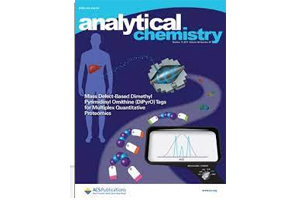Separation of Cells and Microparticles
Separation of Cells and Microparticles in Insulator-based Electrokinetic SystemsAlaleh Vaghef-Koodehi et al January 4, 2023
ABSTRACT
Presented here is the first continuous separation of microparticles and cells of similar characteristics employing linear and nonlinear electrokinetic phenomena in an insulator-based electrokinetic (iEK) system. By utilizing devices with insulating features, which distort the electric field distribution, it is possible to combine linear and nonlinear EK phenomena, resulting in highly effective separation schemes that leverage the new advancements in nonlinear electrophoresis. This work combines mathematical modeling and experimentation to separate four distinct binary mixtures of particles and cells. A computational model with COMSOL Multiphysics was used to predict the retention times (tR,p) of the particles and cells in iEK devices. Then, the experimental separations were carried out using the conditions identified with the model, where the experimental retention time (tR,e) of the particles and cells was measured. A total of four distinct separations of binary mixtures were performed by increasing the level of difficulty. For the first separation, two types of polystyrene microparticles, selected to mimic Escherichia coli and Saccharomyces cerevisiae cells, were separated. By leveraging the knowledge gathered from the first separation, a mixture of cells of distinct domains and significant size differences, E. coli and S. cerevisiae, was successfully separated. The third separation also featured cells of different domains but closer in size: Bacillus cereus versus S. cerevisiae. The last separation included cells in the same domain and genus, B. cereus versus Bacillus subtilis. Separation results were evaluated in terms of number of plates (N) and separation resolution (Rs), where Rs values for all separations were above 1.5, illustrating complete separations. Experimental results were in agreement with modeling results in terms of retention times, with deviations in the 6−27% range, while the variation between repetitions was between 2 and 18%, demonstrating good reproducibility. This report is the first prediction of the retention time of cells in iEK systems.
Application: Microfluidics Applications

